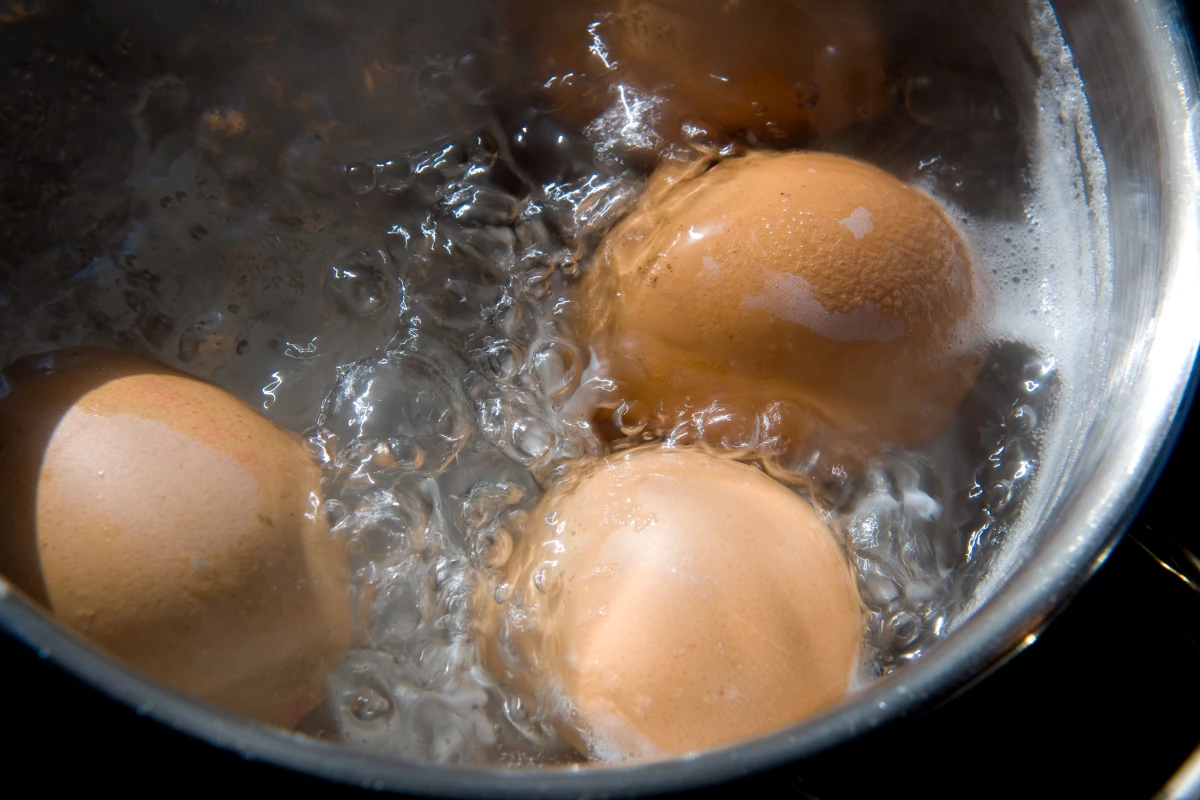While Americans have been grappling with the high prices of eggs, Italian researchers have been looking at how best to cook them. They've derived the perfect method, although it might be too time consuming for the average home chef.
Eggs have certainly been in the news a lot lately. Most of that news has been economic in nature as the avian flu drives up their prices in the United States. But science has been taking a look at the incredible edible as well. Just this week, in fact, we reported on a study that found that eating one to six eggs per week lowered the risk of dying from cardiovascular disease by 29%.
Now, researchers from the University of Naples Federico II, and Italy's National Research Council, have applied the scientific method to eggs in another way: determining how best to boil them.
The issue with getting the perfect boiled egg is that the egg white and the egg yolk cook at different temperatures. The white, or albumen, cooks at 185 °F (85 °C), while the yolk cooks at the cooler temperature of 149 °F (65 °C).
To tackle this culinary conundrum, the researchers first used computational fluid dynamics software to model different cooking routines. Based upon those simulations, they settled on a cooking method: alternating between placing the eggs in water boiling at 212 °F (100 °C), which is the standard cooking temperature for boiling eggs, and then moving the eggs to a pot of water kept at 86 °F (30 °C). Moving the eggs back and forth every two minutes for a total of 32 minutes yielded what the team considered to be the "perfect" boiled egg.
Not only were the eggs cooked through this method – which the team dubbed "periodic cooking" – evaluated based on their texture and appeal to the senses, but they were also examined using nuclear mass resonance and high-resolution mass spectrometry. This deeper analysis revealed that during cooking, the temperature of the egg white ranged between 95 to 212 °F (35-100 °C), while the yolk remained at a steady temperature of about 153 °F (67 °C).
More interestingly, though, the chemical analysis found that eggs cooked through the periodic method, as opposed to more traditional methods, had a higher level of polyphenols in their yolks. Polyphenols are health-boosting plant compounds that are transported to chicken eggs through the hens' feed stock. They have been linked to everything from fighting cavities to warding off type 2 diabetes.
While the periodic cooking of eggs at home might be a step too far for most, the researchers say their work could have applications beyond better breakfasts.
"Overall, we found that our cooking method leads to improved texture and nutritional content with respect to traditional shell-on egg cooking techniques, thus elevating the already established concept by which temperature and time have a critical role in the resulting properties of egg parts," write the researchers in their study, which has just been published in the journal Communications Engineering. "The potential of this approach beyond cooking, with possible uses in curing, crystallization, and material structuring, is also foreseen."
Source: Springer Nature via Scimex





